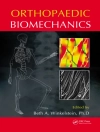This richly illustrated atlas written by a team of experts guides the reader to the applications of lasers and light technologies in dermatology. It is divided in two parts: the first reviews the physical and optical concepts related to lasers and light sources, and provides a detailed description of surgical (ablative and non-ablative), vascular and pigmentary laser devices. It also discusses difficult-to-treat conditions, such as melasma and scars. The second part of the atlas is more clinically-oriented, presenting reproducible parameters and high-resolution images of pre and post-treatment, and desired end points in order to achieve an optimal result. Enabling readers to gain an understanding of the various topics concerning lasers, it explores conventional, non-conventional and combined laser treatments in a wide range of indications, as well as practical aspects such as medicolegal issues, informed consent and management of complications.
The increasing knowledge andgrowing expertise in lasers and light devices make it necessary for physicians to be aware of the latest developments in this quickly evolving field. As such, this book is of interest to all physicians working in dermatology, cosmetology and aesthetic medicine, as well as to physician assistants and nurses using lasers in their daily practice.
Tabela de Conteúdo
Preface.- 1 Physical Principles.- 2 Surgical ablative lasers and fractional microablative lasers (far infrared) Organ tissue.- 3 Non ablative lasers and fractional non ablative lasers (near and middle infrared) Organ tissue.- 4 Lasers for the treatment of vascular lesions (visible-near-infrared) Vascular tissue.- 5 Lasers for benign pigmentary lesions and tattoos (visible and near infrared) Pigmentary tissue.- 6 Lasers for hair removal (visible and near infrared).- 7 Intense Pulsed Light.- 8 Lasers and Excimer Light Sources (Ultraviolet).- 9 Melasma.- 10 Laser and Scars.- 11 Summary Table.- 12 Appendix: Organization and safety in the laser therapy clinic.- 13 Clinical photography and non-invasive optics.- 14 Wound dressing.- 15 Anesthesia.- 16 Addendum: Actinic Keratosis.- 17 Addendum: Blue Light Therapy.- 18 Addendum: The role of laser in the genital district.- 19 Atlas: case reports.- 20 References.
Sobre o autor
Giovanni Cannarozzo is an Adjunct Professor at the University of Rome Tor Vergata. President of the Laser Study Group of the Italian Society of Dermatology, he is the author of over 50 indexed publications in the field of dermatology and laser medicine.
Steven Paul Nistico is Chair of Dermatology at the University of Catanzaro, Italy and Program Director of the Master Degree in Lasertherapy at the University of Rome Tor Vergata. He is currently President of the GILD (Italian Laser Dermatology Group). He has written over 100 Indexed publications in the field of dermatology.
Keyvan Nouri is a Full Professor and Head of Cutaneous Surgery at the Philip Frost Department of Dermatology, University of Miami. He is the author of over 300 Indexed publications and 130 book chapters as well 10 textbooks in the field of dermatology, and Editor-in-Chief of the journal Lasers in Medical Science.
Mario Sannino is an Adjunct Professor at the University of Rome Tor Vergata, and Vice-President of GILD (Italian group for Laser in Dermatology). He is a member of the organizing committee of the Master’s in Laser therapy at the University of Rome Tor Vergata and the author of over 20 indexed publications in the field of laser medicine.












